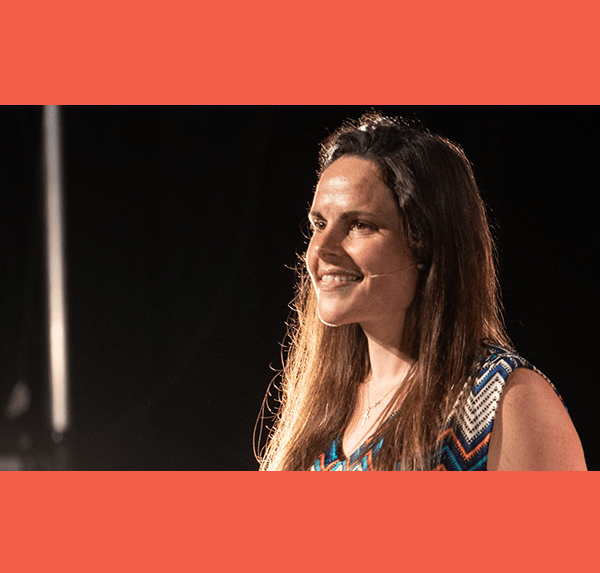LinkedIn: Connect to Opportunity, by Ümit Uludag, Content Manager – part I
Ümit Uludag, a Content Manager for Linkedin Learning, which is part of the world’s largest professional networking site, LinkedIn, spoke to EU Business School students about its culture and values, the content creation process for LinkedIn Learning, and what it takes to be a successful Content Manager.


Ümit holds a BA in American Studies and Education Science and a master’s degree in American Studies from Ruhr-Universität Bochum. He had initially planned to pursue a Ph.D. in the same field and eventually lecture at a university. However, working for netTrek alongside his studies introduced him to the field of e-learning, which is a combination of all the things he values: “Passion, purpose, and connecting to opportunity.” He talked openly and engagingly about how a lifelong passion for education—both learning and teaching—has led him to where he is now.
Ümit chose to accept an Associate Content Manager role with LinkedIn instead of continuing with his education. Here, he has found the perfect synergy of teaching, working with people, project management, and innovation.
Read on to find out more about LinkedIn, its vision, values and culture, and the role of the Content manager.
What is LinkedIn, and what does it stand for?
LinkedIn is a networking site where you can grow your network of professional contacts and connect with recruiters when you’re looking for work. Their mission is to connect the world’s professionals to make them more productive and successful.
Ümit said he loves working for LinkedIn because he really identifies with their values and culture. He implored the students to look into these things when researching potential employers. Work is a much more positive experience, he told them, if you work for a company that stands for the same things as you do.
So, would you get along well at LinkedIn? Check out their company culture and values below to find out whether you’d be interested in working for them in the future.
Firstly, the culture of LinkedIn, which defines the collective personality of the organization, can be broken down into five key elements:
- Transformation. Everyone who works for LinkedIn is there to transform themselves, the company, and the world for the better. As a lifelong learner, Ümit was attracted to LinkedIn’s focus on development and transformation from the get-go.
- Integrity. This is the most important aspect of the company’s culture for Ümit. He believes strongly that the ends should never be used to justify dishonest means. This has served him well so far in both his professional and personal life.
- Collaboration. As valuable as we are as individuals, we’re even more effective when we work together. The culture at LinkedIn reflects this in that they believe that great ideas and inspiration come from everyone.
- Humor. When he first started with LinkedIn, Ümit was surprised to see this one on the list, as he’d never expected „Humor“ to be a key aspect in and for a company’s culture. He came to find out that „Humor“ is really at the heart of LinkedIn and that having a sense of humor and fun at work makes life a lot easier.
- Results. Teams set clear, actionable goals and count on one another to consistently achieve great results, seek leverage through efficiency and effectiveness, and demonstrate leadership at all levels of the organization. As hard as they play (see above), they work even harder and hold themselves to very high performance standards.


The values of the company, on the other hand, are the foundations on which day-to-day interactions and decisions are based. The six operating principles or values of LinkedIn have been carried forward from the company’s startup days. They are:
- Members first. The company knows that they would not exist without members, so everything they do is ultimately driven by their desire to create value for their members and uphold the member’s interests.
- Relationships matter. LinkedIn is in the business of building relationships, which extends to the relationships their staff form at work.
- Be open, honest, and constructive. This one is Ümit’s favorite. He believes it’s the most important one in business, and life in general. As a company, LinkedIn strives to communicate with its members clearly, and colleagues are expected to give each other feedback constructively.
- Inspire excellence. LinkedIn encourages its staff to lead by example, to seek to solve big challenges, set measurable goals, and continuously learn, iterate, and improve.
- Take intelligent risks. “Intelligent” being the key word here. Of course, not every risk works out, but some do, and you never know which ones are which until you try them. And if this one doesn’t pan out, it’s a lesson learned for next time.
- Act like an owner of #OneLinkedIn. At LinkedIn, all staff members make their decisions with care, as if they are responsible for the whole organization and not just a part of it.
Together, the company’s culture and values tell you who LinkedIn are and who they aspire to be.
What does LinkedIn Learning do?
LinkedIn Learning creates and curates exceptional content that helps people build the professional skills they need to transform their lives on a world-class scale. Currently, they offer over 17,000 courses in seven different languages, and 3,000 new courses are added every year. That’s about 60 new courses a week, and it’s crucial that they’re uploaded on this scale to ensure learners stay engaged and get the most up-to-date and relevant instruction from industry experts.


The role of the Content Manager
The role of a Content Manager is varied, and it incorporates many different responsibilities. But at the heart of it, Content Managers look after three very important, interrelated functions:
- Research; to create a concise content strategy and content roadmap.
- Instructor selection, acquisition and relationship management
- Planning and managing courses and their development
The first thing a Content Manager needs is a course idea, so it’s imperative they keep up to date with industry trends and current affairs in order to deliver a course that users need at the time they need it most. Therefore, research is a necessary component of their role. They must study industry reports, articles, and curricula to stay ahead of the curve and create a suitable content strategy in alignement with the overall company’s strategy.
Once they have an idea, they then need to hire an instructor. All of LinkedIn’s instructors are highly qualified, real-world experts. They are great teachers and leaders, passionate about their areas of expertise, and generous when it comes to sharing their knowledge. The best expert or teacher is not automatically the best video trainer – it’s a very special skill to be able to convey personality, warmth, and expertise on camera, or even on an audio recording. As such, the searching and selection process for instructors is comprehensive and utilizes many different channels.
When the Content Manager has found the right instructor for a particular course, the two of them then work together to develop it. In the first meeting, they decide on the most important aspects of the course – e.g., title, duration, target group, level. Then, when they have both agreed on the outline, the instructor develops a more detailed concept on their own. In the second meeting, the Content Manager discusses the course details with the instructor until they reach a happy consensus.
At this point, it is time to prepare the course, so the Content Manager hands the instructor over to a content producer. These are the people who work to actually bring the course to life. They collaborate with the instructor to prepare materials for the course, including slides and scripts, and help them optimize the content for delivery. Content producers also coach instructors on their performances to help them elevate their teaching style and get the best possible results.
There are a couple of different ways LinkedIn records their courses, depending upon the format agreed upon with the Content Manager. Some courses are live, while others (usually tech training courses) are screencasts. Others are audio-only.
After the course has been recorded, the instructor’s work is done. Then it is on to post-production. Over the course of six to eight weeks, graphics are produced, videos are edited, sounds are mixed, and the course is slowly shaped into what you will later see online.
What skills does a Content Manager need to have?
As you can see, the job of a Content Manager is varied, meaning you need a diverse skillset to succeed in this field. But Ümit said, if he had to pick his top three, they would be:
- Communication. You will need excellent communication skills to liaise with your team, the instructor, the content producer, and the post-production teams.
- Project management. He can work on up to 60 courses a year, and often he has more than one at a time, all at different stages of completion. You need to know what’s ready when. This leads us to the third and final point…
- Time management. Good time management is essential when you’re juggling multiple deadlines. You need to prioritize the items that are due first to make sure you are not holding up other functions of the content team.
If you enjoyed this article and want to hear more from Ümit, be sure to look out for our follow-up post, in which we detail his advice to students on how to tell their professional stories on LinkedIn most effectively.











